With its vast grin, compact, muscular body, and loveable nature, the American bully is hard not to fall in love with.
Okay, full disclosure at this point. I have been surrounded by bully breeds all my life, from numerous Staffordshire bull terriers, a Boston terrier, and more recently, my American Staffordshire terrier, an Olde English Bulldogge cross Boerboel mix.
So to say I am partial to these breeds of dog with their stocky bodies and great personalities would be an understatement and the American Bully is no different.
Despite being a relatively new breed to the bully pack, the American Bully comes with impressive lineage and highly desirable qualities, making it an excellent family pet.
In this article, we look at all the facts surrounding this amazing breed and what is required to obtaining an American bully.
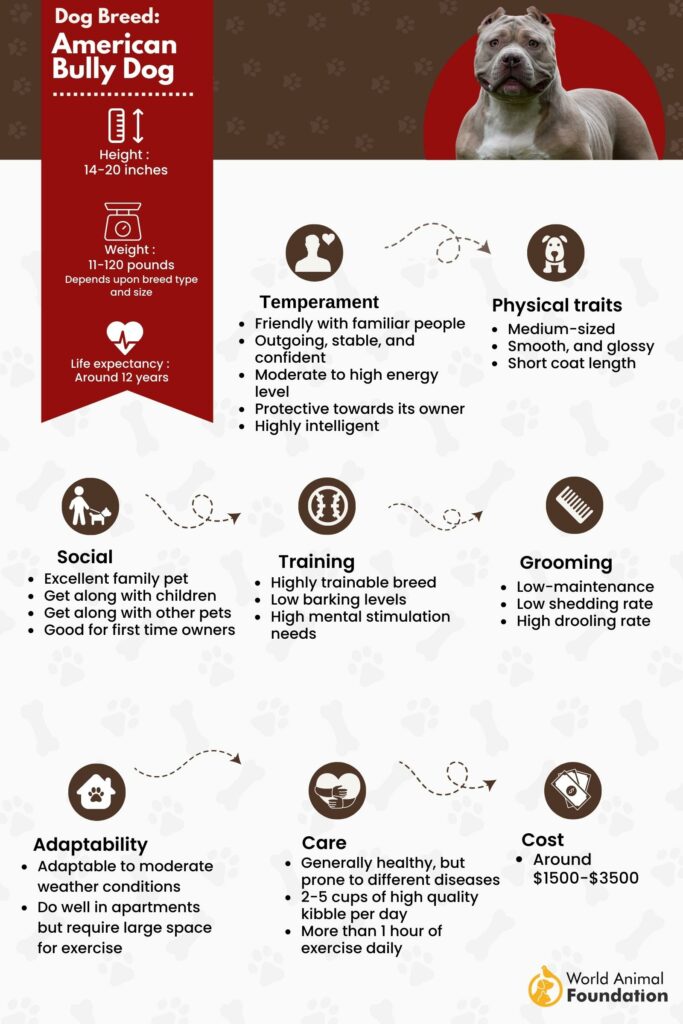
About the Breed
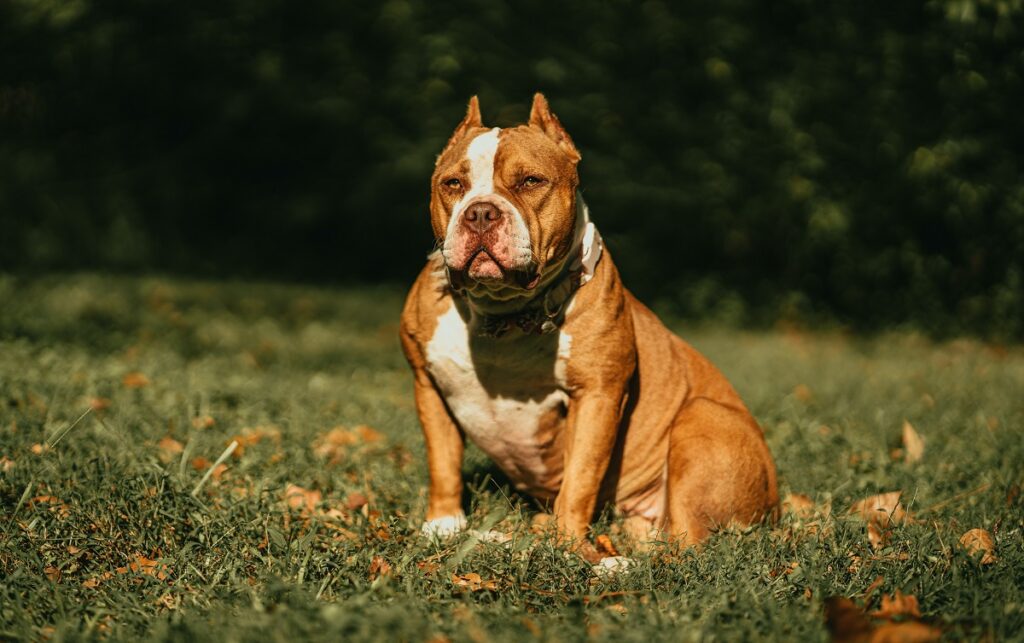
As a relatively new breed, the American bully breed is fast gaining popularity, especially in the US, where the dog breed originated from.
With their characteristic muscular body, heavy bone structure, and blocky head, these impressive dogs are hard to miss.
Yet their aggressive-looking appearance is deceiving. For when bred correctly, American bullies are well-rounded dogs with a good-natured temperament, making them the perfect family dog.
Affectionate by nature, these dogs are not only social animals with a zest for life who love being around people. They are also protective and loyal and generally tend to get along well with other dogs and animals.
Because of their devoted personality, you will find that they always aim to please and thrive on attention. And better yet, make an intelligent guard dog of sorts, although they may be more prone to licking the person to death than being aggressive.
History of the American Bully Dog Breed
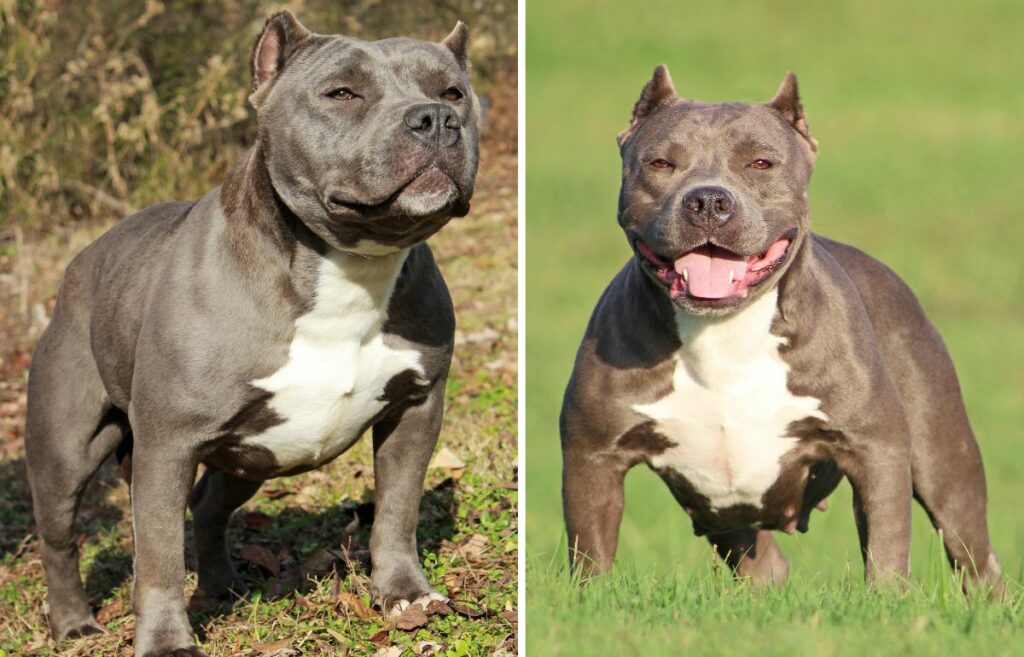
To fully understand the American bully dog breed, you need to go back to its history.
The American bully originated in the US between the 1980s and the 1990s.
Created through years of selective breeding, the Bully carries the desired genetic traits of two dogs, the American Staffordshire terrier, and the American Pitbull terrier.
But it is also generally agreed that other breeds, such as the English bulldog, American bulldog, and the bull mastiff, have all contributed to the American Bully’s bloodline as well.
But it was not until 2004 that the American bully as a breed gained recognition with the establishment of the American Bully Kennel Club, which produced written standards for the breed.
And in 2013, the United Kennel Club also formally recognized the breed.
However, to date, neither the Kennel Club nor the American Kennel Club have recognized the American Bully or accepted it as a purebred dog on their registry.
American Bully Dog Breed Facts and Myths
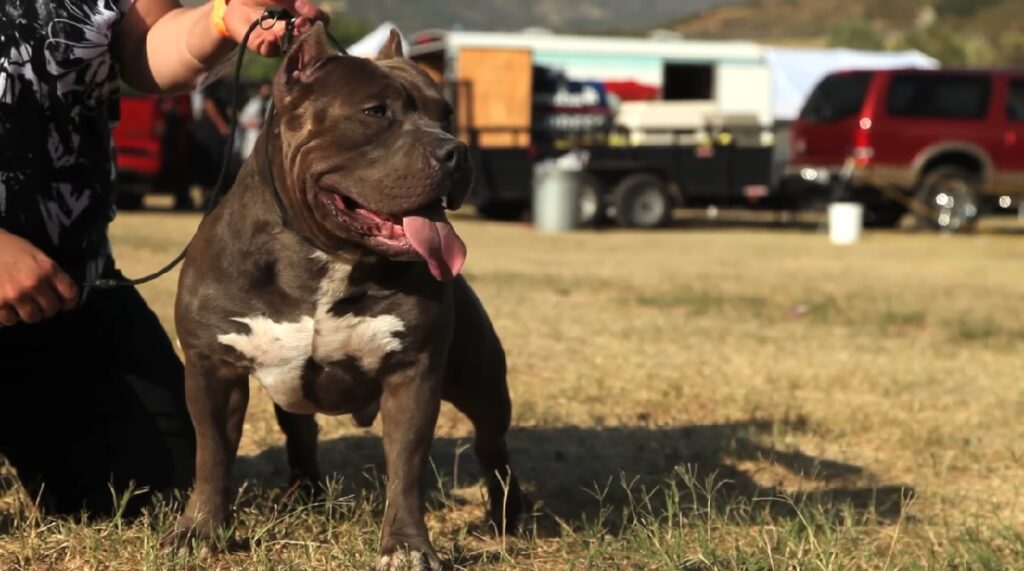
Unfortunately, along with the rise to prominence of the American bully during the last couple of years, many people still continue to confuse the breed with that of the American Pit bull terrier, which couldn’t be further from the truth.
Here are some myths about the bully dog breed and the actual facts about dog.
MYTH: American Bully breeds are among the most aggressive types of dogs.
FACT: Bullies are just the opposite. They are sweet-natured and even-tempered dogs who are affectionate and will happily show a stranger love and not aggression.
MYTH: Due to the stocky build of the American bully, they are incapable of running great distances.
FACT: The American Bully, when bred properly, has a solid and defined athletic build that is capable of impressive athleticism. In fact, this breed of dog is more athletic than most bulldog breeds.
MYTH: The American Bully looks the way they do due to the use of steroids.
FACT: Unfortunately, some breeders still do give their dogs steroids to produce the desired over-large muscular bodies, which is illegal.
This practice is frowned upon by reputable breeders as once the drugs are stopped, the dog can be left with a myriad of health problems.
In addition, sometimes these drugs get passed down from mother to puppies, and as a result, their litter may suffer from drug-related health issues.
American Bully Dog Breed Appearance and Types
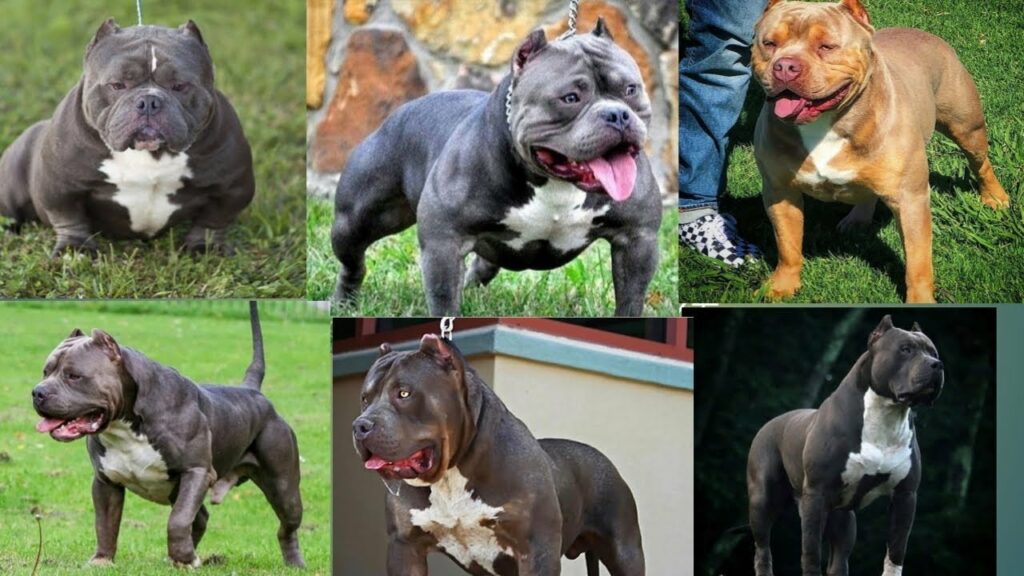
As with any other dog breed, physical characteristics and desired traits play a significant role in setting the breed standard for the American bully.
According to the American Bully Kennel Club, four types of American bullies are recognized, largely determined by adult height.
These are the Pocket American Bully, Standard American Bully, Classic, and XL.
Despite differing in size, the general appearance of these dogs remains pretty uniform in that they should be a medium-sized dog with compact muscular body and blocky head.
The head should preferably be in proportion to the rest of the dog’s body and free of exaggeration.
In addition, they should feature a broad skull, heavy bone structure, and pronounced cheek muscles with pointed ears.
Unfortunately, many owners of American Bully prefer to crop their dog’s ears for aesthetic purposes, which can lead to them looking more aggressive and fiercer than they are.
But let’s look at the breed’s appearance in more detail.
Size
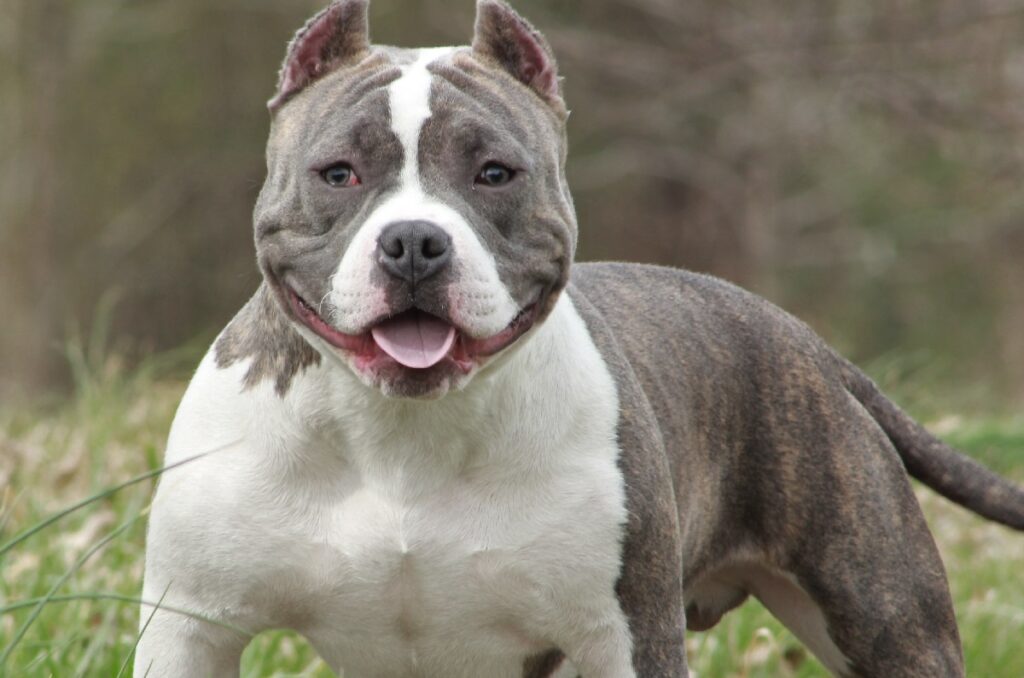
Starting from the smallest. The Pocket Bully males’ adult height is under 17 inches, with females under 13 inches.
Next is the Standard and Classic American Bully, with males up to 20 inches while females come in at 19 inches.
Lastly is the XL American Bully, the tallest of the breed, with males up to 23 inches and females up 22 inches.
Weight
As you can imagine, the weight of the different types of bully dogs fluctuates with the size and gender of the animal.
A pocket Bully fully grown can weigh anything between 11 to 24 pounds, while the Standard and Classic can be anywhere between 60 to 80 pounds.
The XL, the largest American bully dog breed, comes in at a whopping 70 to 130 pounds of stocky muscle and bone structure.
Coat
An American bully has a smooth short coat and, as a result, does not shed very much, which is great news if you are prone to allergies.
Color
With a nod to its ancestral lineage, you will find that American bullies come in various colors.
From Brown, blue, Fawn, Red, black, and white to pie-bald, these dogs are usually a mixture of two colors, with some also being tri-colored.
American Bully Dog Breed Temperament and Personality
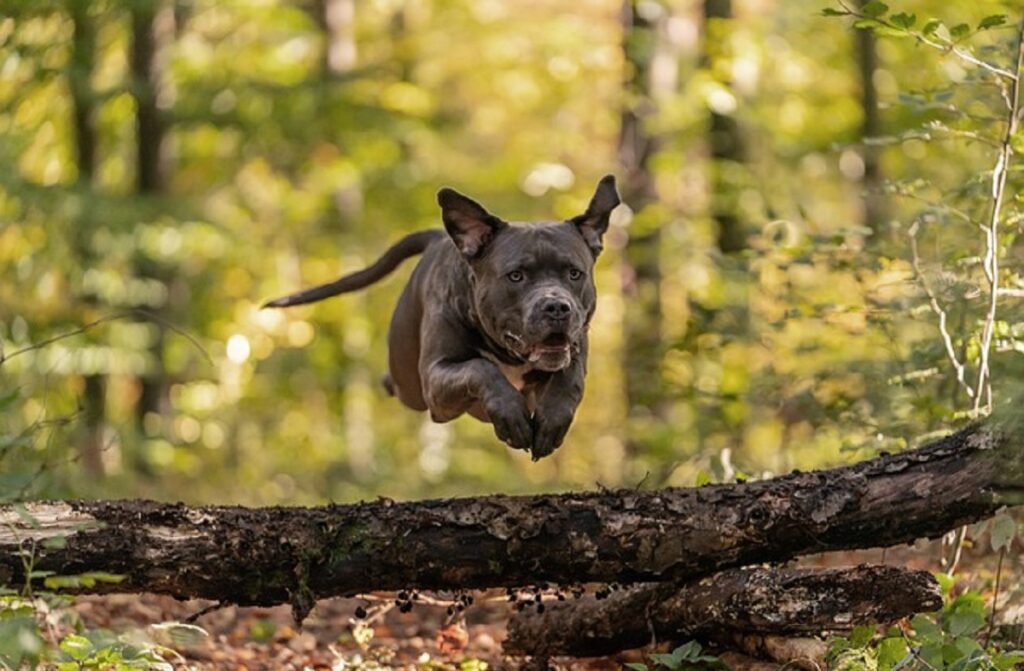
Specifically bred to be a companion dog, the American Bully has retained the best traits and characteristics from its parental line. That of the American Staffordshire terrier and American Pit Bull terrier.
In fact, this well-rounded dog was specifically bred to have a low fighting drive and yet still retain a muscular, athletic build.
The American bully is a confident dog, not prone to skittish or unpredictable behavior, making it a great family pet.
Highly intelligent, they love to please and are not prone to bumping or herding tendencies. Great with children who can be a little rough at times, a bully, once socialized, will tolerate their antics and take it in their stride.
Good-natured, the American bully is protective of its owners, affectionate, loyal, and gentle.
Often amusing with its antics, this powerhouse of a dog is more comfortable wriggling its way onto the couch and being an oversized lap dog than working dogs like its ancestors.
American Bully Dog Breed Health and Care
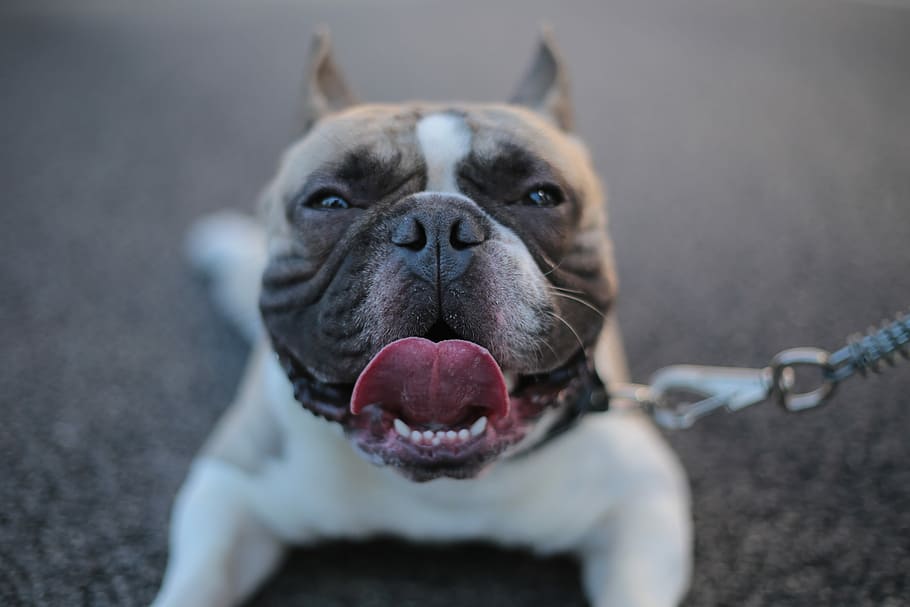
While considered a low-maintenance dog breed, the American bully, like any other breed, is vulnerable to certain health problems that require proper care in order for it to thrive and grow into a happy and healthy dog.
As the American bully is prone to hip dysplasia, it is essential that the dog is provided with the appropriate levels of exercise and that their food intake is monitored to prevent obesity, which is a contributing factor to this condition. It can be treated with the help of CBD Oil for hip dysplasia.
Unfortunately, they are also vulnerable to eye issues such as cherry eye, which appears as a large red obstruction in the eye. Another common disorder is ulcers on the cornea.
Additionally, the American bully can also be prone to skin diseases such as seborrhea which results in excessively dry or oily skin, and eczema, which is characterized by dry, flaky patches of skin.
And they also lean towards developing hotspots resulting from parasites, allergies, or over-grooming.
Finally, American bullies can also be predisposed to congenital heart diseases, which are often genetic in origin. This condition can be made worse by obesity in the dog or the presence of parasites such as heartworm.
American Bully Vs Pitbull
Often confused with the Pitbull, the American bully is a breed all on its own, even though it is an extension of the pit bull breed.

So let’s look at how the American Bully stacks up against the Pitbull.
Appearance
Perhaps the easiest way to tell these two medium-sized dogs apart is to look at their appearance. The pitbull is more athletic in appearance, while the bully is more squatter and wider than it is tall.
Lineage
The Pitbull was first introduced in the UK as a breed by crossing the old English bulldog and old English terrier.
While the American bully was first introduced in the US as a breed by crossing the American Staffordshire terrier and the American Pitbull terrier.
Coloring
Both dogs have short straight coats in a wide range of colors.
Health
Pitbulls, on average, have a longer lifespan at 12 to 16 years compared to that of the American bully at 9 to 13 years, and are both prone to certain health conditions.
Temperament
Both the American bully and Pitbull are similar in temperament in that they are both people-orientated dogs who crave company.
Indeed both breeds are fond of children and are often referred to as nanny dogs who will defend their family in the face of danger.
Not inherently aggressive, both breeds will defend themselves in a fight but are generally not the ones to start it.
Also worth noting is that both breeds, with their friendly dispositions, make a great service dog but not a guard dog unless specifically trained to do so.
Training
And speaking of training, the pitbull is incredibly responsive when it comes to training, while the American bully, due to his stubborn nature, requires an experienced owner who can coax the best out of him but you can check out our guide on how to train an aggressive dog.
Both dogs must be socialized from day one. The Pitbull more so than the bully due to its dog fighting past, where it might be apt to display fear aggression if not socialized properly.
Exercise
The Pitbull and the American Bully require at least 60 minutes of exercise daily.
But pit bulls are more agile and active, and due to their intelligence, they require a more varied exercise routine to keep them entertained.
Food Requirements of American Bully Dog Breed

Due to the muscular makeup of American bullies, nutrition plays a vital role in ensuring the dog remains strong and impressive looking.
These dogs need a balanced diet in order to remain in optimum health and not lapse into obesity which they are prone to.
As such, an American Bully requires a high protein diet, and the dry kibbles made especially for the breed should contain high-quality food ingredients with a protein content of at least 30% and a fat content of 20%.
When young, an American bully puppy begins forming its adult muscle structure, so it is recommended that they are fed up to two cups of kibbles three to four times a day.
As the pups grow into adulthood, this feeding habit changes as the meal quantities increase to three to five cups of kibbles but only twice a day.
American Bully Dog Breed Training and Grooming
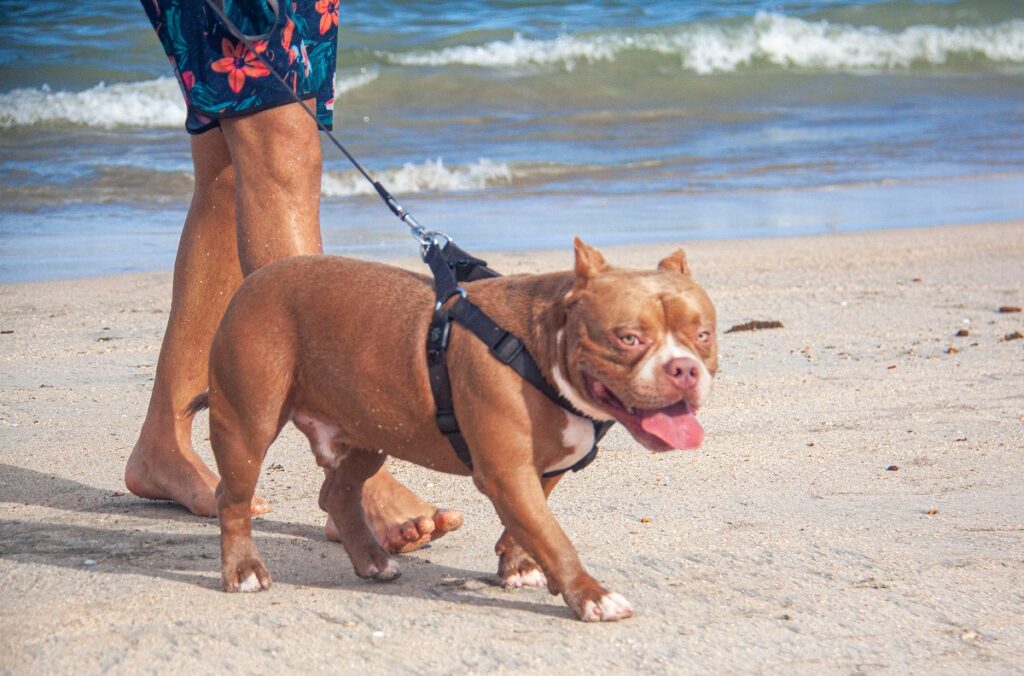
While an American Bully’s grooming requirements are not as finicky as some other dog breeds, training them is necessary.
For while aiming to please, this powerhouse of a dog can also overpower you with its sheer strength if not trained properly.
Grooming
Despite being incredibly low maintenance, American bully’s still have grooming requirements that need to be taken care of.
Their short fur hair makes cleaning them more manageable compared to other dog breeds. But the downside is that the American bully’s fur is also stiff, which means a lot of debris and dirt can accumulate in it.
As such, it is recommended that an American bully be washed at least once a month, and it is advised to keep an eye out for fleas, ticks, and lice as part of the grooming activities.
Also, a regular weekly brushing routine should be established to minimize the shedding of fur and reduce the dirt and debris collected between the dog’s fur.
Nail clipping is also advised as American bully’s nails grow fast.
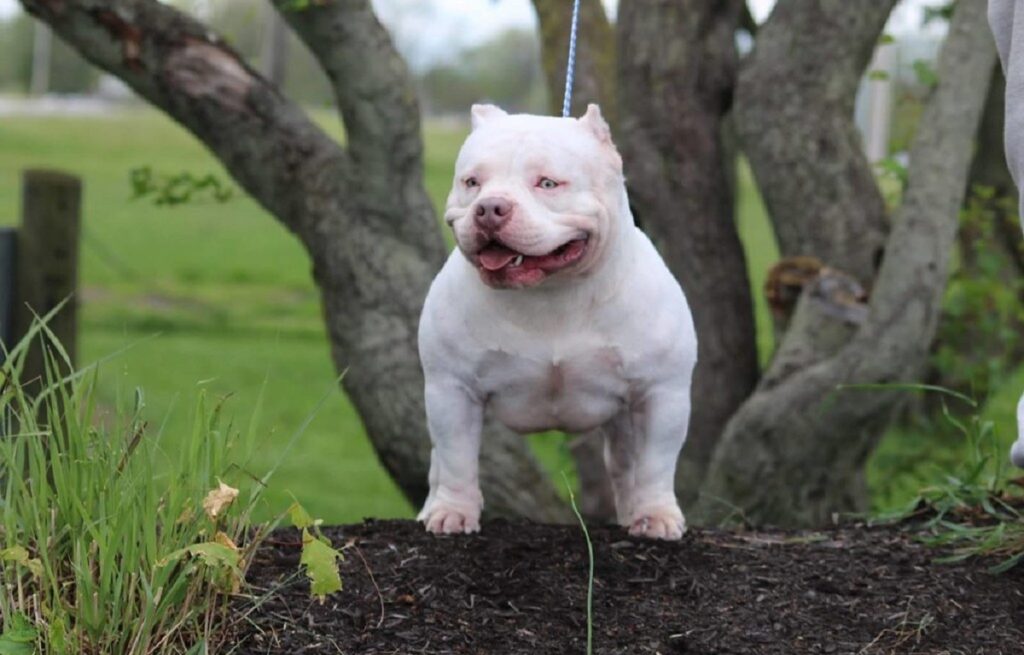
Training
Training an American bully is an absolute must for you to establish that you are their leader and to mold their temperament and behavior positively.
Bullies are a smart and intelligent breed of dog that is receptive to training no matter their age. But in order to get the best out of their behavior, you need to be patient and consistent in your training, as they can have a stubborn streak if not motivated properly.
The earlier you start a training regime with your bully puppy, the better behaved your dog will be.
Navigating through the intricate paths of training a stubborn yet intelligent breed like Bullies, smart dog collars have emerged as a pivotal tool for numerous pet parents. For deeper insights into the world of advanced pet containment and management, our Halo collar reviews and Spoton fence reviews illuminate how these gadgets have revolutionized the traditional norms of dog training.
Particularly for breeds that may display a potent blend of intelligence and stubbornness, like Bullies, the incorporation of such technologically advanced tools could meaningfully enhance the efficacy and consistency of training regimes.
Things to Consider When You Raise American Bully Dogs
Just like any other dog, there are some things you need to take note of if you are considering acquiring an American Bully dog.
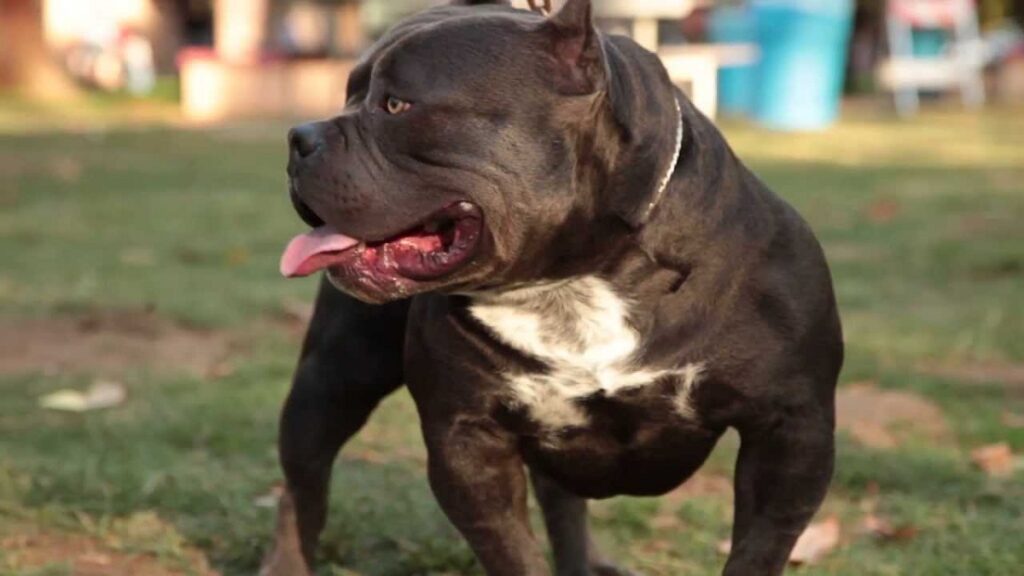
For as lovable and even-tempered as the breed is, some factors, such as health conditions and exercise requirements, go hand in hand with owning an American bully.
They May Be Prone to Obesity
Unfortunately, due to their genetics and lineage, such as the Olde English Bulldog and American Bulldog, many American bullies may be more prone to obesity.
Being stocky and short in frame can make it hard for owners to identify when their beloved bully is verging on obesity.
As such, there is no breed standard for weight for the American bully. But what is known is that its weight should always be in proportion to its frame.
This means the dog’s waist should be visible when you look at it from above and that the ribcage is not covered in too much fat.
They Need Lots of Exercise
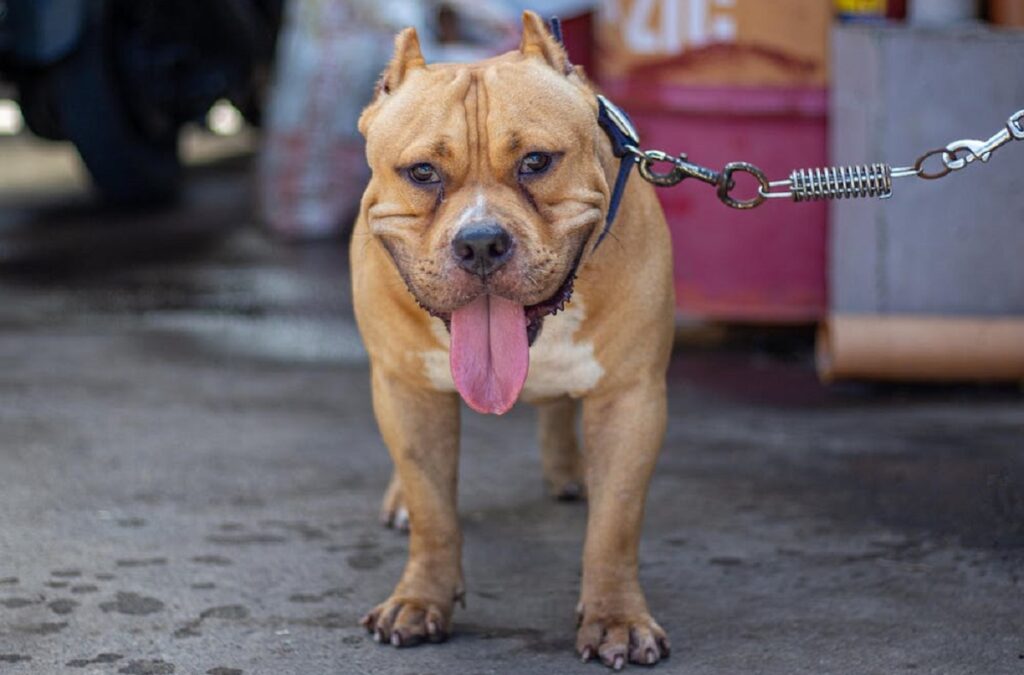
American Bullies are typically low-maintenance dogs but are moderately active, meaning they will require at least 60 minutes of exercise daily to keep them happy.
And younger, more energetic dogs may require even more exercise-related activity.
They especially love games of tug and fetch, which will give them a little more action and keep them on their toes.
They’re Prone to Joint Issues

As mentioned previously, due to their muscular body and size, American bullies are more vulnerable to developing health issues as they age.
Joint problems include hip dysplasia, where the ball and socket of the hip joint fail to fit snugly together, and elbow dysplasia, a congenital abnormality found predominately in Pocket American Bully dogs.
They May Be Prone to Skin Allergies
Another health issue associated with American bullies is that they are prone to developing allergies.
Common allergies include food, medications, and environmental factors such as pollen, mold, and fleas.
They Need Lots of Socialization
The American bully breed dog is a naturally social animal that loves being around people.
And as pack animals, it is essential that they learn how to socialize with other dogs and animals from a young age.
For if American bully puppies are not socialized from a young age on how to react in a healthy way, just like any other dog breed, they can develop undesirable behavioral issues such as aggression.
Conclusion
Despite its growing popularity, the American bully is still a rare dog, and the prices paid for an American bully puppy can run anywhere up to $10,000, with quality proven bloodlines costing even more.
When buying one of these well-rounded, good-natured, and incredible dogs, bear the following in mind.
Research legitimate breeders online. If they don’t have a kennel website with reviews and videos of their dogs, it’s best to steer clear.
Additionally, the breeder should also be affiliated with a kennel club, be able to tell you about the dog’s lineage, and prove that their puppies have been certified as healthy by a veterinarian.
Most importantly, you must be able to commit to socializing, exercising, and training the dog in addition to ensuring all its physical needs are met.
And while an American bully is not for everyone, if you do buy one, know this. With their infectious nature and personality quirks, you will receive unwavering loyalty, devotion, and trust from your pup!


